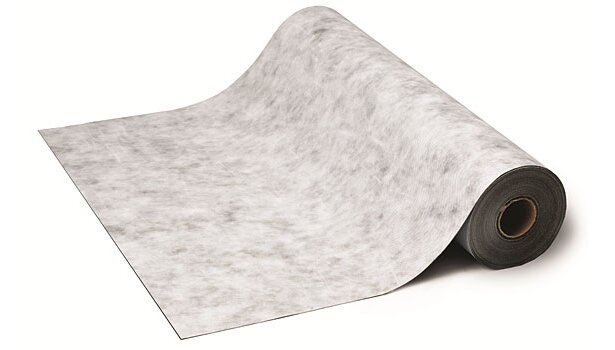Insulating your home with EIFS is a huge investment in not only the comfort of your home, but the value of it. The comfort of not having drafty rooms that you or your children have to sleep in can’t be measured in dollars. In measurable terms of value however, the insulation that is added reduces heating and cooling bills – money that is never recovered once spent, and the aesthetics can have a large impact on resale value. Like all investments, you want to make sure that it’s insured against accidental damage.
While there aren’t any official insurance policies that will cover dents and holes in EIFS, there are investments you can make to increase it’s durability. The least expensive investment with the most return-on-investment is adding a layer of high impact mesh to the project.
There are varying grades of fiberglass mesh that can be used on your home, measured by weight per square yard. Heavier weight mesh (11 oz and 15 oz) will be more impact resistant than lower weight mesh (5 oz).
EIFS normally incorporates a layer of (5 oz) mesh, applied over top of the insulation and embedded in the cementitious coating. While this mandatory protective layer will protect against normal impact, things like screwdrivers, baseball bats or wheelbarrows can still break through the finish coat, base coat and mesh and leave torn mesh and exposed styrofoam. EIFS manufacturers therefore recommend a heavier mesh (11 oz or 15 oz) in areas that might need additional impact resistance – typically around doors, driveways, walkways or where children might play.

The high impact mesh is more expensive than standard mesh because there is extra material – it is a higher quality than regular mesh. The two ways of adding high impact mesh are:
- Replace the layer of standard mesh with a heavier duty mesh during installation; or
- Add another layer of high impact mesh embedded in base coat on top of the first layer of standard mesh
Your contractor will usually have a preferred method of doing high impact mesh, though the choice of how resilient your walls should be will ultimately be yours in the end. If adding another layer of high impact mesh instead of substituting, a day will need to be added to the installation time (24 hours is required for each layer of base coat to dry before installing the next layer).
The Figures
So why invest in high impact mesh? To prevent having to repair a wall. It’s expensive. EIFS can be patched, but because a finish coat changes over time, the patch will never look like the original installation of the wall. Patches will cost $500-$750 to have a contractor come out and perform. The only way to get around patching is to re-coat the wall from corner-to-corner (or between control joints – you did specify control joints right?). Re-coating can cost anywhere from $1000-$3000 depending on how much wall surface needs to be done.
Adding high impact mesh on the other hand, requires a little up front investment but pays for itself the very first time it prevents any damage. Adding it in a few key places (doors, driveways, walkways) will cost $300-$600 on average – a small price to pay for a lifetime of insurance.
Questions and Answers
Q: Does a home with high impact mesh look any different than one without?
A: No, the additional layer of mesh and base coat do not change the overall appearance of the house. Once completed, there is no visual difference between a house with high impact mesh and one without
Q: Can high impact mesh be used as a selling feature on an EIFS home?
A: Absolutely. Buyers will feel more comfortable purchasing a home that has additional protection against accidental damage. Make sure to get written specifications and DuROCK material receipts from your contractor as proof, as well as a photo during installation if possible.
See also: Corner With High Traffic Lacking High Impact Mesh and Column Lacking Heavy Duty Mesh.
 EIFS tape is a self-adhesive membrane that is made from a rubberized asphalt that has been laminated to a polyester fabric. The fabric helps to strengthen , providing a stronger, more crack-resistant bond with most exterior coatings to provide a self-sealing, waterproofing layer. It is primarily used around windows and doors, taping panel seams and other penetrations. The membrane (or “tape”) is meant to be covered by EIFS, stucco or some other type of siding and trim material. The product is highly adhesive, gripping firmly to nearly all dry, clean surfaces including plywood, OSB, insulation boards, housewrap, masonry, concrete and een metallic products like aluminum siding. The tape is usually about 30mm thick and can be applied in temperatures ranging from 5 degrees to 45 degrees. There are a number of roll thicknesses available, ranging from 36″ to 96″ and usually 100 feet in length.
EIFS tape is a self-adhesive membrane that is made from a rubberized asphalt that has been laminated to a polyester fabric. The fabric helps to strengthen , providing a stronger, more crack-resistant bond with most exterior coatings to provide a self-sealing, waterproofing layer. It is primarily used around windows and doors, taping panel seams and other penetrations. The membrane (or “tape”) is meant to be covered by EIFS, stucco or some other type of siding and trim material. The product is highly adhesive, gripping firmly to nearly all dry, clean surfaces including plywood, OSB, insulation boards, housewrap, masonry, concrete and een metallic products like aluminum siding. The tape is usually about 30mm thick and can be applied in temperatures ranging from 5 degrees to 45 degrees. There are a number of roll thicknesses available, ranging from 36″ to 96″ and usually 100 feet in length.




